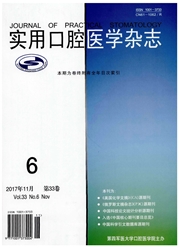

 中文摘要:
中文摘要:
目的:检验非血管化游离植骨块的活力,观察新骨来源和生成情况,进一步探讨非血管化游离骨移植的愈合机制。方法:取15只转染绿色荧光蛋白的C57BL/6小鼠,截取一侧5mm股骨(完整保留骨膜及部分肌肉附着),植入同近交系非荧光小鼠的5mm股骨缺损区,术后3d、1、2、3、4周连续组织学和荧光显微镜观察。结果:术后3d:移植组织及其周边表现为炎症反应:出血、炎细胞浸润、移植骨少量吸收。1周时骨吸收达到高峰,破骨细胞大量增生,未分化间充质细胞聚集,新骨开始形成。1例新生骨在术后2周开始大量增生,1例3周时逐渐矿化成熟,1例4周时新骨与余留移植骨已不易区分。部分移植肌肉和新生骨组织术后有绿色荧光表达。结论:完整保留骨膜和部分肌肉附着的非血管化游离植骨块在短期内可以部分保留自身活力。新生骨大部分源于移植骨本身,移植骨膜在新骨形成过程中起重要作用。
 英文摘要:
英文摘要:
Objective:To evaluate the regeneration ability of non-vascularized bone grafts using green fluorescent protein(GFP) transgenic mice. Methods: Fifteen critical size defects were prepared in one side of femur of 15 C57BL/6 mouse and repaired by non-vascularized bone from isogenous GFP transgenic C57BL/6 mouse. Sacrifice was performed after 3 days, 1, 2, 3 or 4 weeks for histologic and fluorescence analysis. Results: After 3 days, grafted bone were partly absorbed and the bone defects were dominated by the presence of blood clots and inflammation cells. After 1 week, blood clots were replaced by granulation tissues and mesenchymal cells. At 2 weeks, 1 out of 3 animals showed calcified woven bone formation. After 3 weeks, 1 out of 3 animals showed that newly formed trabecular bone gradually changed into mature bone. At 4 weeks, 2 out of 3 animals showed mixture of newly formed bone and grafted bone. Conclusions: Parts of the non-vascularized bone grafts remain survival in 4 weeks after tranplantation. Newly formed bone mainly originates from the grafted bone. Grafted periosteum plays an important role in new bone formation.
 同期刊论文项目
同期刊论文项目
 同项目期刊论文
同项目期刊论文
 期刊信息
期刊信息
